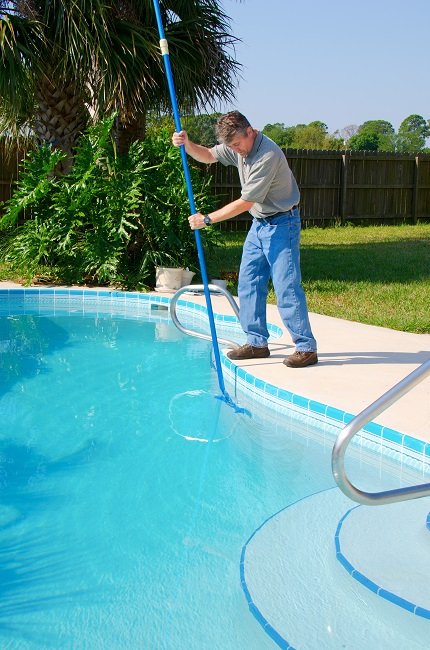Pool Maintenance 101
Caring for a pool isn’t so difficult that you’ll need a user’s manual, but arming yourself with the “whats” and “whys” of routine cleaning and maintenance will make the difference between fun or flop. If you are a pool owner wondering why your water isn’t in tip-top shape, or if you’re considering getting a home pool, read on for more information on how to properly maintain your pool!
What Are The Parts of My Pool And What Do They Do?
Water: The water in your pool is (obviously) the most important part of your pool. Keeping it full and keeping the chemicals at the correct level ensure your pool is clean and ready to enjoy at all times
Interior walls: your in-ground or above ground pool will have hard walls surrounding the perimeter of the structure. These walls keep the water in and keep dirt, bugs, and debris at bay
Filtration system: the filter system is a part of your pool powered by energy that keeps your water circulating and clean. It pulls in the water, cycles it through the filter while removing build up, leaves, bugs, etc
What Supplies Do I Need To Care For My Pool?
Pool brush
Pool skimmer net
Pool vacuum
Shock (chlorine)
Pool chemical set
Routine Pool Care
Setting a schedule for routine pool care is crucial to the health of the structure of your pool and water. With environmental and recreational factors at play, it’s easy for problems to occur–and just as easy for them to be remedied!
Use your net to skim leaves, bugs, and other debris from the surface of your pool after each use. Skim daily, even if your pool has not been used.
Ensure proper circulation and filtering by utilizing your pool filter. Watch for cycling of water into and out of your filter. Keep your pump running for a minimum of 8 hours a day, or the amount of time it takes your filter to circulate through as many gallons of water as your pool contains.
Remove build up on walls every week by using a brush or vacuum. Getting scum and debris off the sides will ensure your water remains clean and clear and preserve the integrity of the pool structure.
Vacuum the pool floor as needed for debris that settles at the bottom. You should be able to see through your water and take note of how often it needs vacuuming.
Test your water levels weekly. Your water can become unclean, cloudy, or smelly if not properly treated. Through the use of pool chemicals, test the pH levels and alkalinity to maintain cleanliness.
Shock your pool with chlorine, especially after heavy usage or a rainstorm. Often times after these events, standard pool chemicals can’t balance your water and chlorine will be able to “shock” the water levels back to a normal range.
Utilize a pool cover when you know your pool won’t be used for extended periods of time.
In addition to your routine pool care, frequently inspect the structural integrity of your pool. Look at the liner and walls, floors, exterior, and pump functionality for any abnormalities. Likewise, maintaining your pool tools is important too, to extend the longevity of your investment!
Varsity Backyards is committed to designing and building you the backyard oasis of your dreams. For all of your pool needs in the central Texas area, contact us today!

